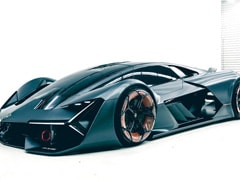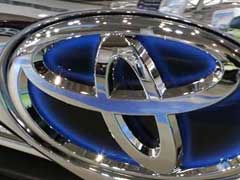MIT Engineers Build An Energy-Storing Supercapacitor From Ancient Materials

- MIT engineers have developed a new energy storage system using cement and carbon black.
- Combining the conductive carbon black into cement, offers an extremely high internal surface area, providing efficient energy storage capabilities.
- It has a potential to power isolated homes or buildings, and roadways far from the grid using solar panels connected to the cement supercapacitors.
Engineers at the Massachusetts Institute of Technology (MIT) have made a discovery, creating a new energy storage system from two oldest materials: cement and carbon black. This supercapacitor, combined with water, has the potential to revolutionize renewable energy storage for sources like solar, wind, and tidal power.
Also Read: Fisker Unveils All-New Electric Vehicle Lineup
Capacitors, simple devices with two electrically conductive plates separated by an electrolyte, can store electrical energy efficiently. The MIT researchers leveraged this principle to develop a cement-based material with an internal surface area, achieved by introducing carbon black into the concrete mixture. The resulting nanocomposite has a dense, interconnected network of conductive material, providing an ideal structure for energy storage.
According to the team, the supercapacitor could be incorporated into the concrete foundation of a house, enabling it to store an entire day's worth of energy while adding minimal cost and maintaining structural integrity. Furthermore, they envision using this technology to create concrete roadways that offer contactless recharging for electric vehicles as they travel.
Also Read: Kawasaki Ninja e-1 and Z e-1 Type-Approved In Australia; Ready For Launch
"This technology is extremely promising because cement is ubiquitous," said MIT professor Franz-Josef Ulm. Unlike conventional batteries that rely on materials like lithium (with limited supplies), the cement-based supercapacitors can be produced cost-effectively and at scale.
The team calculated that a 45-cubic-meter block of nanocarbon-black-doped concrete could store about 10 kilowatt-hours of energy, equivalent to the average daily electricity usage of a household. With the ability to charge and discharge rapidly, these supercapacitors outperform traditional batteries.
The team determined the optimal ratios of cement, carbon black, and water through various tests. They processed by creating small supercapacitors, similar in size to button-cell batteries, with a capacity to hold a 1-volt charge. Connecting three of these capacitors illuminated a for larger versions they are starting with ones comparable to a typical 12-volt car battery, and eventually scaling up to a 45-cubic-meter version to demonstrate its ability to store power equivalent to that of a house
Initial applications of this technology may include isolated homes, buildings, or shelters far from grid power, powered by solar panels connected to the cement supercapacitors.
The carbon-cement supercapacitors can also be used to build roadways that could store energy along with solar panels to and transfer the energy to electric vehicles on the road.
Ulm emphasized that the system is highly scalable, with energy-storage capacity directly proportional to the volume of the electrodes. Depending on the application's requirements, the mixture can be adjusted to achieve desired properties.
The researchers plan to further develop and demonstrate the technology with larger versions of the supercapacitors, moving towards practical applications in various energy storage scenarios.
The findings of this groundbreaking research were published in the journal PNAS, authored by MIT professors Franz-Josef Ulm, Admir Masic, and Yang-Shao Horn, alongside other researchers from MIT and the Wyss Institute for Biologically Inspired Engineering. The work was supported by the MIT Concrete Sustainability Hub, sponsored by the Concrete Advancement Foundation.
Written by: Ronit Agarwal
Trending News
 3 mins readWill The Kawasaki W230 Be Launched In India?
3 mins readWill The Kawasaki W230 Be Launched In India?
Latest News
 car&bike Team | Dec 23, 2025India Bike Week 2025 In Pictures: Highlights From Edition 12The 12th Edition of IBW was held on December 19 and 20, and if you missed this year’s festival, here is a recap of all that happened.3 mins read
car&bike Team | Dec 23, 2025India Bike Week 2025 In Pictures: Highlights From Edition 12The 12th Edition of IBW was held on December 19 and 20, and if you missed this year’s festival, here is a recap of all that happened.3 mins read Amaan Ahmed | Dec 23, 2025Tata To Enter Rs 40 Lakh Passenger Car Market With First Avinya Electric SUV In End-2026Set to be one of three EV launches from Tata Motors next year, the first in the Avinya series of electric vehicles will catapult the Pune-based carmaker into uncharted market territory, as it will be the most expensive Tata yet.1 min read
Amaan Ahmed | Dec 23, 2025Tata To Enter Rs 40 Lakh Passenger Car Market With First Avinya Electric SUV In End-2026Set to be one of three EV launches from Tata Motors next year, the first in the Avinya series of electric vehicles will catapult the Pune-based carmaker into uncharted market territory, as it will be the most expensive Tata yet.1 min read car&bike Team | Dec 23, 2025Will The Kawasaki W230 Be Launched In India?Kawasaki India has teased the W230 on its Instagram handle, indicating that the Kawasaki W230 may be in consideration for a launch in India.3 mins read
car&bike Team | Dec 23, 2025Will The Kawasaki W230 Be Launched In India?Kawasaki India has teased the W230 on its Instagram handle, indicating that the Kawasaki W230 may be in consideration for a launch in India.3 mins read Jaiveer Mehra | Dec 23, 2025Suzuki Fronx Secures One Star Safety Rating In ANCAP Crash Tests As Rear Seatbelt Fails During TestingThe Fronx scored less than 50 per cent points in both, adult and child occupant protection categories.1 min read
Jaiveer Mehra | Dec 23, 2025Suzuki Fronx Secures One Star Safety Rating In ANCAP Crash Tests As Rear Seatbelt Fails During TestingThe Fronx scored less than 50 per cent points in both, adult and child occupant protection categories.1 min read car&bike Team | Dec 23, 2025Final Jaguar F-Pace Rolls Of The Line: Production EndsThe Jaguar F-Pace marks the end of the brand’s internal combustion lineup, as the final model rolls off the line.2 mins read
car&bike Team | Dec 23, 2025Final Jaguar F-Pace Rolls Of The Line: Production EndsThe Jaguar F-Pace marks the end of the brand’s internal combustion lineup, as the final model rolls off the line.2 mins read car&bike Team | Dec 22, 2025Maruti Suzuki Celerio Secures Three-Star Rating In Global NCAP Crash TestsSix airbags-equipped model secured a three-star adult and two-star child occupant protection rating; the dual airbag model scored a two-star rating.3 mins read
car&bike Team | Dec 22, 2025Maruti Suzuki Celerio Secures Three-Star Rating In Global NCAP Crash TestsSix airbags-equipped model secured a three-star adult and two-star child occupant protection rating; the dual airbag model scored a two-star rating.3 mins read
 Seshan Vijayraghvan | Dec 23, 20252026 Kia Seltos Review: Formula Is Spot On, But Is The Timing Right?The 2nd-gen Kia Seltos has arrived, but it has the challenge of facing strong rivals like the Victoris and Sierra. The question is simple - Does it still have what it takes?9 mins read
Seshan Vijayraghvan | Dec 23, 20252026 Kia Seltos Review: Formula Is Spot On, But Is The Timing Right?The 2nd-gen Kia Seltos has arrived, but it has the challenge of facing strong rivals like the Victoris and Sierra. The question is simple - Does it still have what it takes?9 mins read Seshan Vijayraghvan | Dec 22, 20252026 Tata Harrier & Safari 1.5 Hyperion Review: By The Power Of Petrol!The new Tata Harrier and Safari petrol packs a new 1.5-litre TGDI Hyperion engine, but is it an ideal alternative to the diesel version?7 mins read
Seshan Vijayraghvan | Dec 22, 20252026 Tata Harrier & Safari 1.5 Hyperion Review: By The Power Of Petrol!The new Tata Harrier and Safari petrol packs a new 1.5-litre TGDI Hyperion engine, but is it an ideal alternative to the diesel version?7 mins read Bilal Firfiray | Dec 19, 2025Maruti Suzuki e-Vitara Review: Worth The Wait?After a long wait, the first-ever electric Maruti Suzuki is here. It’s the e-Vitara, and it comes with a few promises. But arriving this late, is it worth the wait? Or is it a case of too little, too late?9 mins read
Bilal Firfiray | Dec 19, 2025Maruti Suzuki e-Vitara Review: Worth The Wait?After a long wait, the first-ever electric Maruti Suzuki is here. It’s the e-Vitara, and it comes with a few promises. But arriving this late, is it worth the wait? Or is it a case of too little, too late?9 mins read Bilal Firfiray | Dec 18, 2025Mercedes-Benz G450d: The Subtle Power of EvolutionThe Mercedes-Benz G 450d evolves subtly with more power, improved efficiency, and modern tech, while staying true to the timeless G-Class design. And character.4 mins read
Bilal Firfiray | Dec 18, 2025Mercedes-Benz G450d: The Subtle Power of EvolutionThe Mercedes-Benz G 450d evolves subtly with more power, improved efficiency, and modern tech, while staying true to the timeless G-Class design. And character.4 mins read Janak Sorap | Dec 11, 2025Harley-Davidson X440 T First Ride Review: Smarter and SharperHarley-Davidson has taken the X440 and given it a more focused and engaging twist. The result is the X440 T—essentially the same platform but updated in areas that give the motorcycle more appeal and riders more thrill.5 mins read
Janak Sorap | Dec 11, 2025Harley-Davidson X440 T First Ride Review: Smarter and SharperHarley-Davidson has taken the X440 and given it a more focused and engaging twist. The result is the X440 T—essentially the same platform but updated in areas that give the motorcycle more appeal and riders more thrill.5 mins read






























































































































